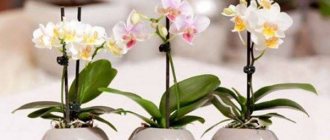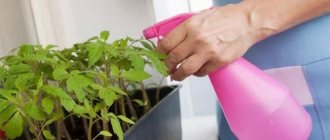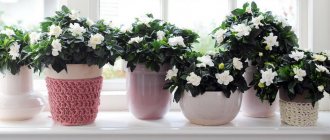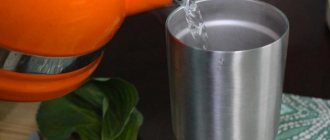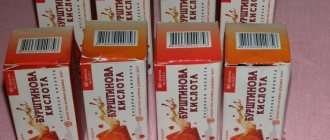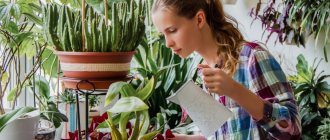Gardeners, both beginners and those with many years of experience, have heard a lot about watering indoor plants with tea. Mulching the soil with dry tea leaves can be an excellent alternative to organic fertilizers, however, the liquid form of fertilizer is considered more beneficial for plants. But fertilizer based on tea leaves is not suitable for all flowers.
Disputes about the benefits and harms of adding the product to the soil are still ongoing. Some believe that flowers and tea are a dubious union, while others claim that with its help it is possible to achieve amazing results. Find out everything about whether you can water indoor flowers with tea.
What are the benefits of watering?
There really are benefits of tea for plants.
This is explained by the fact that the tea leaves contain, although not in large quantities, a number of useful substances. Regular and correct use helps enrich the soil and improve the condition of flowers. Tea is rich in:
- microelements,
- amino acids,
- tannins,
- vitamins, including C, group B.
If we consider the composition of the tea leaves and the effect on the development of flowers, the following benefits stand out:
Prevention of early leaf fall, yellowing, and preservation of natural color. This is achieved due to the presence of potassium and magnesium.- Improved growth, shoot development and bud setting. The presence of potassium promotes photosynthesis, and sodium helps transport nutrients to each cell.
- Maintaining normal development of the root system. Occurs with the help of fluoride, calcium.
- Stimulating growth and development. It manifests itself thanks to a complex of basic elements, and amino acids also contribute to this process.
The benefits for flowers are certainly observed, but the use of tea does not exclude other plant care, for example, simple watering or applying a special adapted fertilizer.
The content of the main components in it depends on the quality of the tea and the brewing method, so these parameters should be treated with attention.
Is it possible to regularly water indoor flowers with tea and why is this necessary?
Beginning gardeners often face the question: is it possible to water indoor flowers with tea, and if so, then sweet tea or without sugar? Heated discussions on this topic flare up on gardening forums: supporters of watering and mulching the soil with tea leaves versus those who believe that plants can do just fine without this fertilizing.
How can plants be harmed?
Despite the extremely useful composition of the tea leaves, its incorrect use for flowers can lead to negative consequences. Possible harms include:
- Plant burn. Even at a brewing temperature of +45°C, damage to the leaves and root system can be caused. This often happens when the remains of hot, unfinished tea are poured into the pot.
- Provoking the development of fungi, rot, mold. Using tea leaves with sugar, as well as frequent watering, lead to these results.
- Growth inhibition, wilting. Since tea contains compounds that increase the acidity of the soil, their excess can lead to the indicated consequences.
- Use of a flavored drink. Artificial and sometimes natural additives will only worsen the condition of plants.
If the use of tea leaves does not benefit the flowers, negative changes in condition are detected, midges and rot appear, then it is better to stop this type of fertilizer.
Effect on soil
The tea leaves, dried after use, are added to the soil during digging, saturating it with useful substances, albeit in small quantities. The best effect is obtained by simultaneously adding wood ash, which neutralizes the excessive acidity of the tea.
Tea leaves not only serve as fertilizer for the flower garden and vegetable garden, but also perform other tasks:
- Loosens clay soil.
- Neutralizes alkaline soil.
- Speeds up compost processing.
- Acts as mulch.
Using sleeping tea enriches the soil with organic matter and improves its structure. The only negative is that to get a positive effect you need to have a considerable amount of this product.
The difference in the effects of black and green tea leaves
It is believed that green tea is more beneficial than black tea, but this is an opinion regarding the effect of the composition on individual body functions.
As for the application to colors, it is difficult to find cardinal differences.
Initially, the leaves are collected from one type of shrub ; there are differences in drying and fermentation. Green tea is less affected, so it is believed that it contains more vitamins and minerals.
There will be no fundamental difference between brewing elite green tea or black tea at an average price for fertilizing flowers. It is important that it is unspoiled and without artificial additives.
In practice, however, black tea is most often used, preferably large-leaf tea. Such fertilizing will not be expensive and will be beneficial for flowers, provided that the watering rules are followed.
Using tea bags
Large and medium tea leaves are much more effective as fertilizer than tea bags. But inventive gardeners have learned to extract benefits from even used tea bags. The most interesting way to use them is as a unique alternative to peat tablets used for growing seedlings.
How it works? The top of the bag is opened, a layer of fertile soil is poured there and the seeds are sown. The bags are placed in dense rows in the container. Everything is irrigated from above with warm water and left until germination. When the seedlings reach the picking phase, they are transplanted into pots. Some of the plants are transplanted into open ground along with the bags, which gradually decompose in the ground.
Which ones cannot be irrigated?
There are plants that prefer an alkaline environment; for them, treatment with tea can be disastrous, for example:
- azalea,
- camellia,
- araucaria.
There are flowers adapted to neutral soil; watering with tea is possible, but rare. These types include:
- begonia,
- dieffenbachia,
- caladium,
- calathea and others.
There are special indicators to check the acidity of the soil; they are sold in gardening stores. Soil recommendations are easy to find for each individual plant species.
Eggshell
Eggshells are known to consist of calcium, which is a fertilizer, although not as important as potassium, nitrogen, and phosphorus. If you grind it well, it will provide significant benefits in combination with mineral fertilizers.
The fact is that most of them increase the acidity of the soil, and the addition of shell powder neutralizes the acidity, which increases the effectiveness of fertilizers. Therefore, it is necessary to add fertilizers with ground shells. The effect of this is positive - the soil does not become acidic.
But you need to know that the shell decomposes slowly, and you can’t put too much of it.
. If you sprinkle shells in large quantities into the soil, this will not have the best effect on the development of seedlings of eggplants, tomatoes, peppers, and other seedlings. This fertilizer is only suitable for adult specimens.
Step-by-step instruction
If you decide to fertilize your home plants with tea, then you need to do this in accordance with the recommendations. In order not to harm the flowers, you should decide what solution to water, whether this particular feeding is necessary for the flowers, and how to do it correctly.
How to prepare the solution?
Preparing a solution for tea fertilizer is easy. Sometimes this is not even required, since watering can be done with the remainder of the solution after drinking tea. Only it should be without sugar, fillers, fresh and at room temperature.
If you need to specially prepare an infusion:
Any 1/3 cup of tea (black or green), preferably loose leaf, is poured with a liter of hot water (85-90 C°).
Some people use boiling water, but at particularly high temperatures some of the beneficial substances are lost.- You need to leave it until it cools down, you can leave it for several hours.
If more solution is needed, then the amount of tea leaves and water increases proportionally.
Testing soil for acidity
Before watering, you need to check the soil for acidity . For these purposes, there are litmus tests, and traditional methods are also offered. High acidity is the main contraindication to pouring tea.
If the recommendations for caring for plants do not contain any special instructions on the composition of the soil, the flowers are weakened, or fertilizers have not been applied for a long time, then you can try feeding them with a tea solution.
Proper irrigation
The infusion is used no more than once a week. You need to water moderately, direct the tea leaves to the root of the plant. Be sure to alternate with regular soil moisture.
If there is noticeable deterioration in the condition of the flowers, wilting, midges or mold appear, then the use of tea leaves should be discontinued.
Methods of application
To make fertilizer, you can only collect loose leaf tea without additives or artificial flavors. The bags are not suitable for use in the garden or vegetable garden, since the leaves inside them are ground too finely and resemble more like ordinary dust, often with the addition of dyes. For any of the methods, the tea leaves must first be dried. It is better to dry in a dark place, since direct sunlight negatively affects the microelements contained in the leaves. High heat is not recommended.
In tablet form
The use of various ready-made tablets for seedlings has become a common practice for gardeners and gardeners.
It is possible to significantly accelerate the appearance of the first shoots, as well as simplify the application of fertilizers in the first weeks of cultivation. Instead of peat tablets, you can use tea tablets made with your own hands. Note! It is better to use tea with medium leaves or small fractions. Kenyan and Indian varieties are sold in this format.
There is no need to dry the tea too much, since you will need to add a little water to hold the mass together. For the tablets you will also need peat, coconut substrate in the proportions of 3:1:0.5, where 3 parts of tea. Mix everything thoroughly, pour in a little water until the mixture is slightly moistened. Line a small tea or coffee cup with cling film, place 3 tablespoons of the mixture inside, wrap, and press on a flat surface. You can plant the seedlings right away, or you can dry them, leaving the ends of the shell open, then store them and use them during the planting season.
Seed filler
Making your own filler for sowing seeds is more difficult than it might seem.
Excess of active fertilizers of any kind should be avoided. The seedlings will stretch out very quickly without forming the necessary support, which is undesirable. Tea is a good filler because the leaves release nutrients slowly and in small quantities. The leaves can be used in combination with peat and sand, with turf soil. The main soil should make up two-thirds of the total filler volume. Dry the tea first so that the soil does not become moldy and small midges do not appear in it.
Tea compost
Making complete tea compost is difficult.
Firstly, you will need a lot of brewed tea. Secondly, due to tannins, the mass will rot very slowly, it will dry out more quickly. Constant moisture will be required, which can lead to the appearance of insects and parasites. The smell from such homemade compost will be pungent, so it is better not to store the container with tea in a house or apartment. The best option for using tea leaves is to add tea leaves to regular classic compost up to a volume of about 20 percent of the total mass. The leaves, by releasing their enzymes, will significantly accelerate the decomposition of other organic components, so the compost will be ready for use in much less time. You can apply this compost with tea according to the standard fertilization scheme.
Note! You can use both green and black tea for this purpose. Exotic varieties of blue, white, and yellow species will not spoil the overall mass, but they will not bring much benefit either.
This is interesting: How to water indoor plants. Watering flowers
Using tea bags
Large and medium tea leaves are much more effective as fertilizer than tea bags. But inventive gardeners have learned to extract benefits from even used tea bags. The most interesting way to use them is as a unique alternative to peat tablets used for growing seedlings.
How it works? The top of the bag is opened, a layer of fertile soil is poured there and the seeds are sown. The bags are placed in dense rows in the container. Everything is irrigated from above with warm water and left until germination. When the seedlings reach the picking phase, they are transplanted into pots. Some of the plants are transplanted into open ground along with the bags, which gradually decompose in the ground.
Using tea leaves
The remaining tea in the teapot is placed on a sieve and dried, then placed in a storage container. If you wish, you can collect a considerable amount of this fertilizer over the winter, especially if your family likes to drink tea. In the spring, it can be used for various purposes - dug up with soil, added to compost, sprinkled under plants as fertilizer and mulch.
The easiest way to use tea leaves is to add them to a compost heap. The tannins contained in tea activate the decomposition process, causing the compost to rot faster.
Digging the soil together with drinking tea improves its structure, making it airy and moisture-permeable. It is recommended to add 0.5 kg of dry tea leaves per 1 m². Of course, it is impossible to collect the required amount of tea for the entire garden, but there will be enough supplies for a flower bed or a couple of vegetable beds.
Tea leaves promote better plant growth. It is not difficult to fertilize - you need to scatter dried, sleepy tea around the stem of the plant, mixing it with wood ash in the top layer of soil. During watering, the fertilizer will gradually release useful elements. When planting, dry tea leaves can be poured into the holes.
A good result is obtained by using sleeping tea as mulch, which will retain moisture and at the same time delay the germination of weeds. The top layer of soil under the mulch remains loose. To prevent such mulch from becoming moldy after rain or heavy watering, you need to loosen the top layer of soil.
Using tea leaves when planting carrots improves seed germination. You need to sprinkle the seeds sown in the furrows with a layer of dry tea leaves. The soil is not clogged, the carrots sprout smoothly and evenly. In garden conditions, the tea leaves quickly rot and serve as a quick supplement at an early stage of development.
Spilled tea
Sleeping tea is a cheap, natural soil amendment. Welding loosens it, and it allows air and moisture to pass through better. The used leaves are ideal for fertilizing open soil in the garden. They are added at any period of plant development. During watering, the foliage begins the process of decomposition and useful components are released from it. After harvesting, a plot of land is dug up along with the tea. It is recommended to add tea leaves in a proportion of 0.5 kg per 1 sq. m.
Dormant leaf mass is used when growing indoor flowers. It is placed instead of drainage to retain moisture. This way the vegetation will not dry out during the heating season or in the summer, being under the sun. In addition, the dried tea leaves during rotting will enrich the soil with useful microelements. Plants with fragile root systems respond especially well to this mixture: begonia, violet. For flowers grown indoors, soil should be mixed with fallen foliage at a ratio of 3:1.
Fertilizer
As a classic fertilizer, you can use either freshly brewed tea, not yet dry, or pre-dried tea, and even an infusion of such raw materials.
The first option is best suited for open ground. It is better to combine tea leaves with ash, which is added during planting or digging. When adding fresh tea leaves that are still wet, you can ignore the growth phase of the crop. At any time, you can add leaves to the soil and carefully dig them up. Fertilizer with dry tea leaves is suitable for indoor plants. They must be added in small quantities to the soil during transplantation.
It is better to put fertilizer directly into the holes in the spring, since quite a lot of tea will be needed. Half a kilogram per square meter is an average calculation for moderately alkaline soils. If the PH imbalance is obvious, the dosage should be increased to 0.7 kilograms per meter.
A nutritious infusion can be prepared as follows: pour 1 glass of dry tea leaves with 3 liters of boiling water. Leave until completely cool. It is advisable to use it within the first 24 hours. There is no need to dose this fertilizer; it can simply be used when watering instead of regular water. This is an excellent option when additional feeding is needed in the middle of the season. A small concentration of microelements will not harm even the weakest plants, but will strengthen them.
Preparation of mulch
The method is to cover the ground with used tea leaves. Mulching prevents weeds from germinating if its layer is at least 5 cm. The soil is protected from drying out in hot weather, and from freezing in cold weather. Winter plantings of crops in this case show excellent germination results. After all, after watering or rain, the mulch gradually releases its beneficial substances to the seeds. Unfortunately, it is impossible to collect a lot of tea leaves at home. It is enough for one or two beds.
This method is suitable for open ground because it is ventilated and warmed up by the sun. At home, when tea waste is added to pots, mold may form or midges may appear, which will likely lead to weakening of the seedlings. To use this type of mulching, it is necessary to evenly distribute the tea leaves over the earthen area where garden crops, fruits or shrubs will be grown.
When does it make sense to collect tea leaves?
Few people will collect and dry tea leaves and then bury them in the ground. But in some cases this activity makes sense. For example, if you work in a cafe and bring home large volumes every day. Then you can add 0.5 kg of waste per square meter.
When working in a tea packaging factory, you can take the leftovers home or buy them on the cheap. Fresh, uncooked leaves are much more valuable, so they are added to the soil in smaller quantities.
Did you like the article? Share with your friends:
Hello, dear readers! I am the creator of the Fertilizers.NET project. I am glad to see each of you on its pages. I hope the information from the article was useful. Always open to communication - comments, suggestions, what else you want to see on the site, and even criticism, you can write to me on VKontakte, Instagram or Facebook (round icons below). Peace and happiness to everyone!
Advantages and disadvantages of the method
The benefits of tea leaves have long been proven. The main advantage of this method is its accessibility. In addition, using such fertilizer is very simple, and most importantly, it is safe for health. There is also another positive point, the existence of which many of you did not even suspect.
The smell of tea leaves can scare away pets. Sometimes housewives complain that cats often chew the leaves of indoor plants, throwing soil from the flower pot onto the windowsill. Some people water them with infusion of citrus peels, but the tea leaves solution will be no less effective.
Peculiarities
For automatic watering to be successful, you need to take into account some of its features. Firstly, in the warm season it is better to water flowers in the evening, and in winter - in the morning.
Secondly, the pot must have drainage made of stones, broken bricks or expanded clay so that moisture does not linger at the roots.
In addition, rain or settled water should be used for irrigation, since tap water contains a lot of lime.
We invite you to read How to extend the life of shoes - useful life hacks
Other features of watering indoor plants are:
- Watering is required only when the soil has dried well, so you must constantly check the condition of the soil before adding moisture.
- Varieties such as gloxinia, cyclamen, and saintpaulia do not like water, so they are watered in a tray.
- If the flowers tolerate water well, then do not forget to spray them. This action will additionally humidify the air and help keep them clean.
- To prevent burns from appearing on the leaves, it is not recommended to spray it if it is standing in direct sunlight, since the drops serve as a kind of magnifying glass.
- If, when watering, water is not absorbed into the soil, but pours out of the pot, this indicates that the soil has dried out. In such cases, it is recommended to immerse the pot up to the soil level in a container of water.
- An increase in temperature and light intensity increase the crop's need for watering.
Figure 1. Methods for automatically watering indoor flowers
In addition, it should be borne in mind that plants in ceramic pots are watered more often than flowers grown in plastic containers.
Advantages and disadvantages of the method
Fertilizing and watering using tea leaves have both pros and cons. The main advantage of this method is its accessibility. Tea leaves are found in every home and are quite easy to use. There is no need to look for special fertilizers and dilute them in a special way. At the same time, the benefits of tea leaves have long been known.
Among the advantages of this method the following facts are also mentioned:
- Tea leaves scare away cats. Cats quite often nibble on plants and throw soil out of the pot. To repel pets, gardeners use various methods, for example, citrus peels. But no less effective is tea leaves, the smell of which repels cats.
- You can use tea leaves in a variety of ways. In addition to watering, tea leaves act as mulch or even drainage. When replanting a plant, it is recommended to supplement the drainage with tea leaves. By the time the roots grow to the bottom of the pot, the tea leaves will already rot and become an excellent fertilizer.
- Ease of use. Simply water the plant with the remaining tea. This is a simple procedure that anyone can do.



